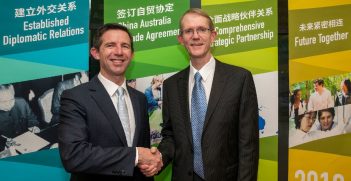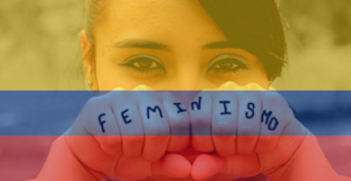Elections in Peru: The Rise of a New Radicalism
The unexpected election results in Peru signalled voter disillusionment. Pedro Castillo, a rural schoolteacher and radical left trade unionist, didn’t appear in the polls a month before the election but got the highest percentage of votes.
The recent elections in Peru have been marked by a generalised lack of credibility of the major political parties, which reflected the number of invalid votes (15 percent) compared to the notorious fractioning of the electoral results. Pedro Castillo managed to obtain 20 percent of the valid votes. Keiko Fujimori, a daughter of former autocrat Alberto Fujimori reached just under 14 percent. The rest of the leading candidates in the polls obtained results between five and 11 percent. For Peruvians, 2021 marks 200 years of independence after almost four centuries of Spanish colonialism. Today what prevails is the uncertainty regarding the new government’s ability to address the serious problems of poverty and inequality existing in the country caused by the COVID-19 pandemic.
To understand what led Peruvians to choose between two such dissimilar options as Castillo and Fujimori, we need to know the composition and contradictions of the Peruvian economy. After 30 years, free-market economics was one of the few things that united the Peruvian political class, generating annual growth rates that reached nine percent before the financial crisis of 2008. This economic bonanza was mainly driven by the export sector (minerals, fishing, hydrocarbons) and construction, but these activities were controlled mainly by foreign or transnational companies. Given the significant gaps in technology and education, the middle and lower classes, 70 percent of the economically active population of Peru, achieved much more limited growth as a result of their role in the service sector and the informal economy.
This striking contrast between a small “modern” economic sector and a big informal sector is the main determinant of the political and economic life of Peru. This disparity has generated little connection between Peruvian elites and the daily reality of their own country. The greatest reflection of this paradox is that, despite years of economic growth, Peru has one of the weakest state apparatuses in Latin America. This is reflected in the fact that Peru is considered among the countries with the worst handling of the COVID-19 pandemic. Apart from the elites and the upper middle classes, for the vast majority of Peruvians it is impossible to get oxygen or ICU beds in public hospitals. The situation got even more dramatic because of the abuse and usury of private clinics that charge prices between S/15,000 and S/17,000 (around $6,000 AUD) per day for an ICU bed. This has led thousands of families to sell their properties and acquire debts that they will probably never be able to pay off.
Poverty and economic inequality, which has been exacerbated by the poor handing of the pandemic by the state, have been the main determinants of the indignation and protest reflected in the elections of April 11. Apart from Pedro Castillo and Keiko Fujimori, the other two candidates who achieved 11 percent of the vote also partially represent this generalised feeling of uncertainty and unconformity. The third-highest share was for Hernando de Soto, a Swiss-trained economist whose scholarly work on property rights and land titling was highly influential in the development of economic theory in the late 1980s and early 90’s. Fourth place was occupied by Rafael López Aliaga, a businessman linked to the tourism industry who has emerged as the leader of the conservative Christian movement in Peru. Following similar campaigns of leaders like Donald Trump or Jair Bolsonaro, López Aliaga declares himself as a “pro-life” and “pro-family” candidate in direct opposition to what he calls “cultural Marxism” and “gender ideology” imposed by “corrupt globalist elites” in complicity with the Peruvian government. His an anti-corruption speech promised to expropriate the assets of the Brazilian company Odebrecht, which was found guilty of paying bribes to many high-level government officials to gain construction licenses.
The election results also reflect the fatigue of Peruvians with regard to centre-left or centre-right candidacies, which they perceive as “lukewarm,” “co-opted by corrupt companies,” and incapable of promoting the profound reforms that the country requires. In this sense, the most notable defeats are those of the moderate left candidate Verónika Mendoza Frisch, from the Juntos por el Perú party, as well as the economist Julio Guzmán Cáceres, from the Partido Morado. Both Mendoza and Guzmán carried out sustained work to strengthen partisanship in the last two years, as well as the elaboration of government plans with concrete proposals on economic reactivation, gender equality, trade, and infrastructure which generated expectant positions in the polls at the beginning of the year. However, Mendoza obtained around eight percent of votes, placing fifth, while Guzmán could barely reach two percent, bypassing the electoral fence and losing his party’s registration.
With the defeat of the political centre, the discrediting of the party system, and the economic crisis derived from the pandemic, we can understand a little better the results of the election. The vote shares obtained by Castillo and Fujimori, candidates located at the antipodes of the Peruvian ideological spectrum, can be explained more by the relative weakness of their opponents than by the strength of their own proposals. Keiko Fujimori managed to surpass her conservative competitors due to the contact that she still maintains with popular sectors as a product of the political work begun by her father Alberto. Castillo positioned himself as a popular leftist opposed to the liberal and elitist left of Mendoza (also called the “caviar left”) with his Marxist economic vision and conservatism on gender issues. Moral conservatism and economic populism are much more aligned with the traditional positions in rural areas of Peru than the progressivism of Mendoza, who is closer to “identity politics,” the feminist movement in universities in Lima, and the promotion of LGTBQ+ rights.
Should we talk about the rise of a new radicalism in Peru? Not yet. It is too early to say whether Castillo and Fujimori will maintain their initial positions for the ballotage, due to their low results compared to the number of invalid and flawed votes, as well as the existing electoral fragmentation. We will have to wait until June 6, the scheduled date for the ballotage, to see the composition of new electoral alliances that both candidates will seek to define in order to know more clearly the ideological sign of the future government. The second electoral round could bring us some unexpected results even greater than those of the first.
Anthony Medina Rivas Plata (Peru) has a BA (Hons) in Political Science and a MA in Public Policy. He is currently working as Director of the School of Political Science at the Universidad Católica de Santa María (UCSM), associated researcher at the Institute of Andean Political Studies (IEPA) and Peru Representative for the International Association for Political Science Students (IAPSS).
This article is published under a Creative Commons License and may be republished with attribution.




